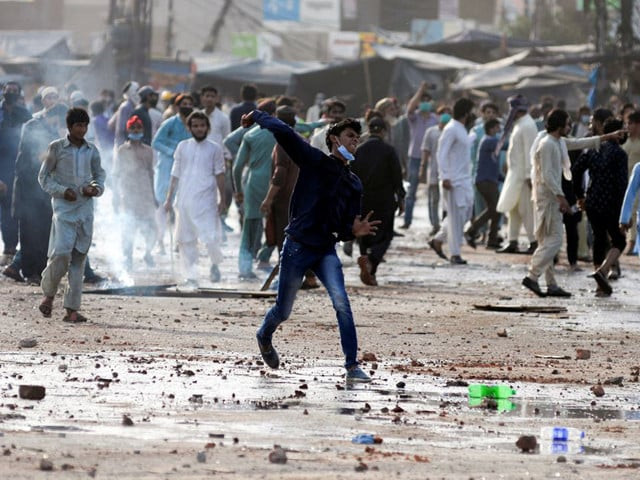From the US to India to Eastern Europe, hate seems to be a word in vogue. The rise of Trump in the US and the successive governments of Narendra Modi in India are glaring examples of the power of politics of division, xenophobia and anger. In England, Brexit represented the division and anger which permeates the global socio economic and political fabric. In Poland, Hungary, and the Czech Republic, right wing governments openly espouse Islamophobic rhetoric to enforce anti-immigration laws and to cover up their own shortcomings. In Brazil, Jair Bolsonaro carries the flag of far-right populism with his bigoted views on race and gender.
It seems like the world is being slowly swept by a wave of far-right populism. But what is the reason for this tilt towards the right? Why are people responding overwhelmingly to the ideas of far-right leaders? One of the many reasons is the sense of deprivation and the frustration among the people. Over the last three decades the economic conditions of urban lower and middle classes have declined, globally. Rising inflation, a rapidly growing population that is overusing available resources, lack of employment opportunities, decrease in real income and an increasing wage gap and the chipping away of welfare states, courtesy of neoliberal reforms have exacerbated the situation.
The neoliberal agenda, initiated by the Reagan and Thatcher regimes in the 80s and then exported globally through IMF and World Bank after the fall of the Berlin Wall, has contributed to the rising inequality and poverty, both in the developed and developing world. With an increasingly diminished role of the government when it comes to social welfare, privatisation and deregulation, neoliberal reforms have done more harm than good.
As a result of this economic disenfranchisement, there is a widespread sense of anger, frustration and powerlessness. People feel increasingly disempowered and desperate as they don’t see much hope for a better future. To the populists and demagogues, this seething frustration has provided a ripe opportunity for political gains. Channelling the anger of the public and inciting the hatred and fear of the other, the populists have made tremendous inroads in mainstream politics forming governments in two of the world’s largest democracies. Both India and America are classical examples of this dynamic. Fuelled by increasing economic inequalities and frustration, the countries elected two hate mongering bigots.
The concept of fear of the supposed ‘other’ calls for some psychological analysis. As human beings, we want to make sense of the inexplicable. We want to know the cause of our suffering and understand it. When people collectively suffer through crisis like these, they often look for scapegoats. This simplifies the complicated, makes it easier to comprehend. This is where the populists come in with statements like “It is the immigrants. Build a wall. It is the Latinos. It is the Muslims. Ban them, keep them out”. We have seen how bigoted rhetoric like this has been used to incite fear and hatred.
Looking at India, the rise of Modi and seven years of BJP rule has led to an immense increase in adherence to the the Hindutva ideology. Spearheaded by the RSS, the Hindu nationalism pits the Hindus of India against other religious minorities, colouring the entire country in saffron. The Indian Muslim being the ‘other’ in this situation is at the receiving end of this hate. The introduction of the Citizenship Amendment Act and the annulment of the special status of Kashmir are two prime examples of targeting of the largest minority in India.
In Europe, the other has been the Muslim immigrant escaping their war-torn land to get to the European borders after risking their lives on perilous boat journeys. In the US, it is the reactionary forces supporting Trump who are scared that immigrants from across the border and beyond are a threat to social stability stealing their jobs and assaulting women.
In Pakistan too, the frustration and anger at the economic conditions is rampant. The country has a huge population of around 220 million out of which 64 per cent is younger than 30. There are limited economic opportunities available to accommodate this bulge of youth. Since the last two decades due to inflation, prices of essentials commodities and food have exponentially increased with the working classes being hit the hardest.
According to UNDP’s National Human Development Report (NHDR), elite privilege consumes $17.4bn of Pakistan’s economy with the corporate sector taking a lion’s share of $4.7bn. Half of the national income is held by the richest 20 per cent when compared with the poorest 20 per cent, who hold just seven per cent. The middle class has shrunk from 42 per cent of the population in 2009 to 36 per cent in 2019 thus further declining the standard of living. This shows the widening gap between the rich and the poor while also displaying the deeply entrenched inequality in society. Additionally, there is an absence of the rule of law. The rich and mighty operate with impunity and remain unaccountable. Religious intolerance and extremism are on the rise with minorities facing discrimination and persecution. Since August 2018, at least 31 members belong to the minorities have been killed and 58 injured in targeted attacks.
Owing to the above mentioned facts, Pakistan seems like a fertile ground for right wing populism. A recent development also needs to be assessed. A few weeks back workers and supporters of Tehreeke Labbaik Pakistan (TLP) brought the entire country to a standstill by attacking law enforcement personnel and blocking main roads and highways in protest. They were demanding the expulsion of the French ambassador and the release of their arrested leader, Saad Rizvi. Fierce clashes in different parts of the country between charged activists of TLP and law enforcement agencies left many including law enforcement personnel dead and hundreds of protesters and policemen injured. Under mounting pressure of the protests, the government was forced to form a committee for the expulsion of the French ambassador giving into the demands of the protesters. As a consequence, EU’s Parliament has decided to review Pakistan’s GSP+ status.
It is interesting to see the journey of TLP from political obscurity to become the third largest party in Punjab in the 2018 elections. Bagging 2.2 million votes, mostly from Punjab, the party won two provincial seats in the Sindh Assembly. TLP originated from the umbrella of religious parties called Tehreeke Labbaik Ya Rasool Allah (TLYR) demanding the release of Mumtaz Qadri who gunned down Punjab governor Salman Taseer in 2011. In 2016 after Qadri was executed, TLYR launched protests and held a sit in at Islamabad’s D-Chowk. After seeing the movement’s popularity, Maulana Khadim Hussain Rizvi, the firebrand cleric and patron-in-chief of TLYR launched a political party (TLP) to translate social and religious support into political clout.
TLP is the flag bearer of the blasphemy issue demanding death for blasphemers.
Some political analysts suggest that the Pakistan’s security establishment allegedly helped launch the TLP to break the vote bank of PML-N in Punjab. Whatever the case might be, it is a fact that TLP is now a political force in Pakistan and Punjab with considerable street power. The former voters of PTI unhappy with the government on the blasphemy issue would most likely turn to the TLP. This means that TLP can go on to become one of the largest political parties in the country in the coming years. There is widespread support of TLP’s agenda among the lower and lower middle classes in Punjab. The party has been skilfully exploiting a sensitive religious issue for political gains and the rewards have been massive.
In the case of Pakistan, the frustration of the people especially the disempowered youth has been channelised through religious sentiments, which works as a catalyst and as a result, the TLP wins politically.
After the violent protests, the government banned TLP under the anti-terrorism act. However, this is not really a solution since repressed elements can come out stronger in uglier ways. Pakistan needs to address the underlying causes which include the increasing inequality and income disparity, absence of rule of law and good governance, lack of education and rising religious extremism and intolerance. Unless Pakistan fixes such issues, we may well be on the road to be ruled by forces of bigotry and fanaticism.



COMMENTS
Comments are moderated and generally will be posted if they are on-topic and not abusive.
For more information, please see our Comments FAQ